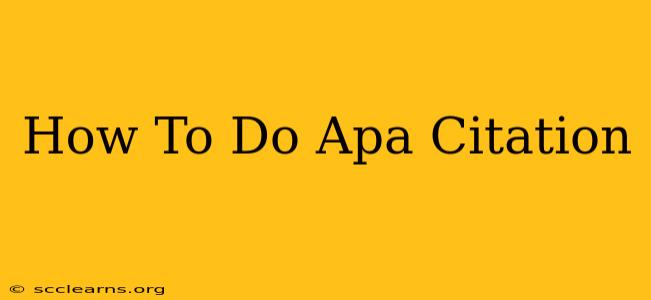Understanding how to properly cite sources using APA style is crucial for academic integrity and avoiding plagiarism. This comprehensive guide will walk you through the essentials of APA citation, covering in-text citations and the reference list. Mastering APA style will not only enhance your credibility but also demonstrate your commitment to academic rigor.
Understanding APA Style: The Basics
The American Psychological Association (APA) style is widely used in social sciences, education, and psychology. It emphasizes clarity, consistency, and proper attribution of sources. The core principles revolve around providing enough information for readers to easily locate the original source. This includes author, date, and publication details. Failing to correctly cite your sources can lead to serious academic penalties.
Key Elements of an APA Citation
Every APA citation, whether in-text or in the reference list, needs specific information. The exact elements vary depending on the source type (book, journal article, website, etc.), but generally include:
- Author: The person(s) or organization responsible for the work.
- Date: The year of publication.
- Title: The title of the work (book, article, webpage, etc.).
- Source Information: Details specific to the source type (publisher, journal name, URL, DOI, etc.).
In-Text Citations: Giving Credit Where It's Due
In-text citations are brief references within your writing that directly link to a full citation in your reference list. They typically include the author's last name and the year of publication.
Different Types of In-Text Citations
- One Author: (Smith, 2023)
- Two Authors: (Smith & Jones, 2023)
- Three or More Authors: (Smith et al., 2023) (Use "et al." after the first author's name)
- Direct Quote: Use quotation marks and include the page number: "Direct quote" (Smith, 2023, p. 10).
- Paraphrase: While you don't need quotation marks, you still need to cite the source: Smith (2023) argued that...
The Reference List: A Detailed Inventory of Your Sources
The reference list, placed at the end of your paper, provides complete bibliographic information for each source cited in your text. Each entry follows a specific format, ensuring consistency and ease of access for readers.
Formatting Your Reference List
- Hanging Indent: The first line of each entry is flush left, and subsequent lines are indented.
- Alphabetical Order: Entries are listed alphabetically by the first author's last name.
- Consistency: Maintain consistent formatting throughout the list.
Example Reference List Entries
-
Journal Article: Author, A. A., Author, B. B., & Author, C. C. (Year). Title of article. Title of Periodical, volume(issue), pages–pages. https://doi.org/xx.xxx/yyyy
-
Book: Author, A. A. (Year). Title of work. Publisher.
-
Website: Author, A. A. (Year, Month Day). Title of page. Site name. URL
Note: The specific format might vary slightly depending on the type of source. Always consult the latest APA Publication Manual for the most up-to-date guidelines.
Mastering APA Citation: Tips for Success
- Start Early: Don't wait until the last minute to cite your sources.
- Use a Citation Management Tool: Tools like Zotero or Mendeley can help you organize and format your citations.
- Double-Check Your Work: Carefully review both your in-text citations and your reference list for accuracy.
- Consult the APA Manual: The official APA Publication Manual is the ultimate guide to APA style.
By following these guidelines, you can confidently and accurately cite your sources using APA style, ensuring academic honesty and strengthening the credibility of your work. Remember that proper citation is essential for academic success. Don't hesitate to consult additional resources and seek help if needed.

